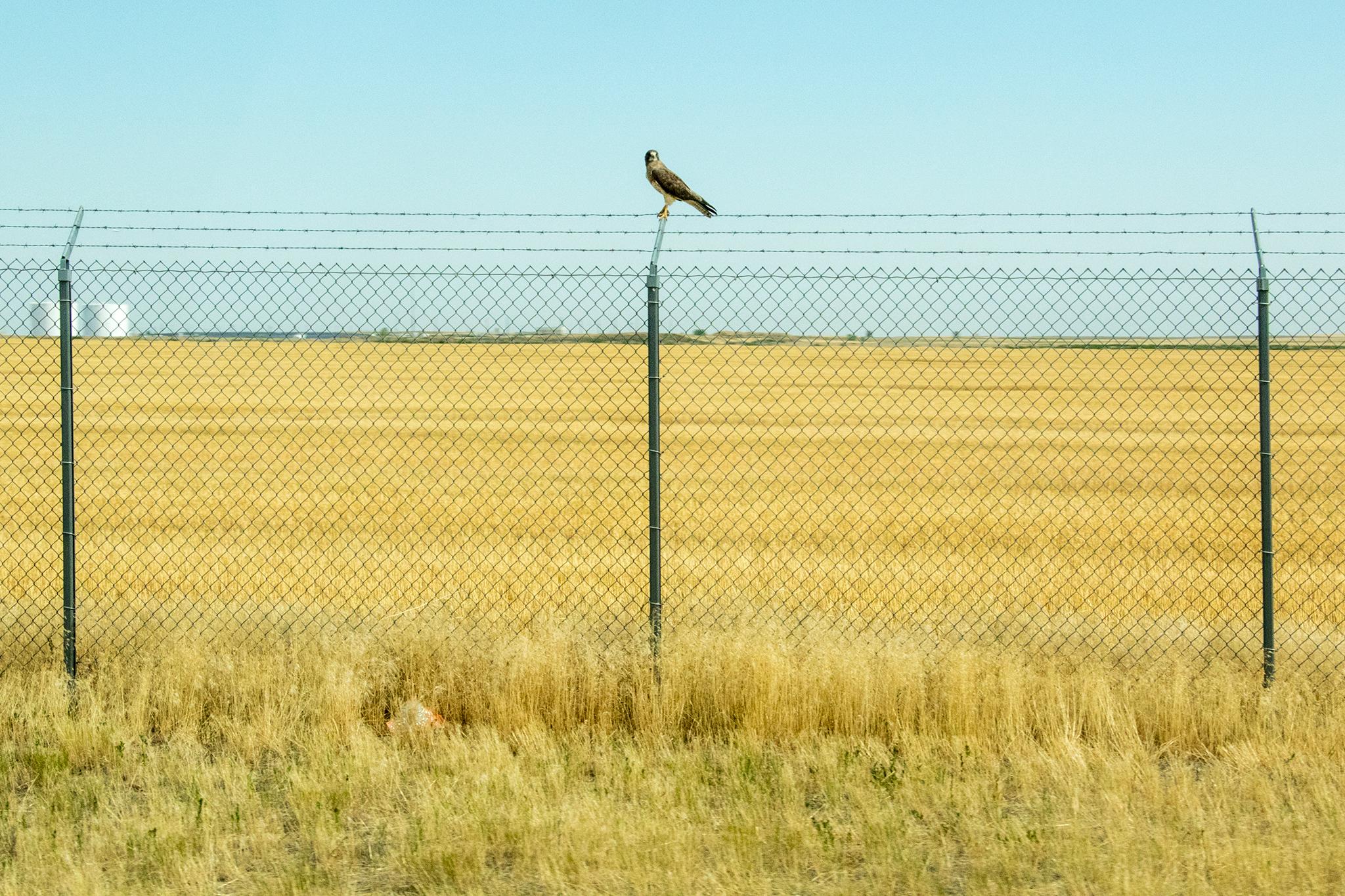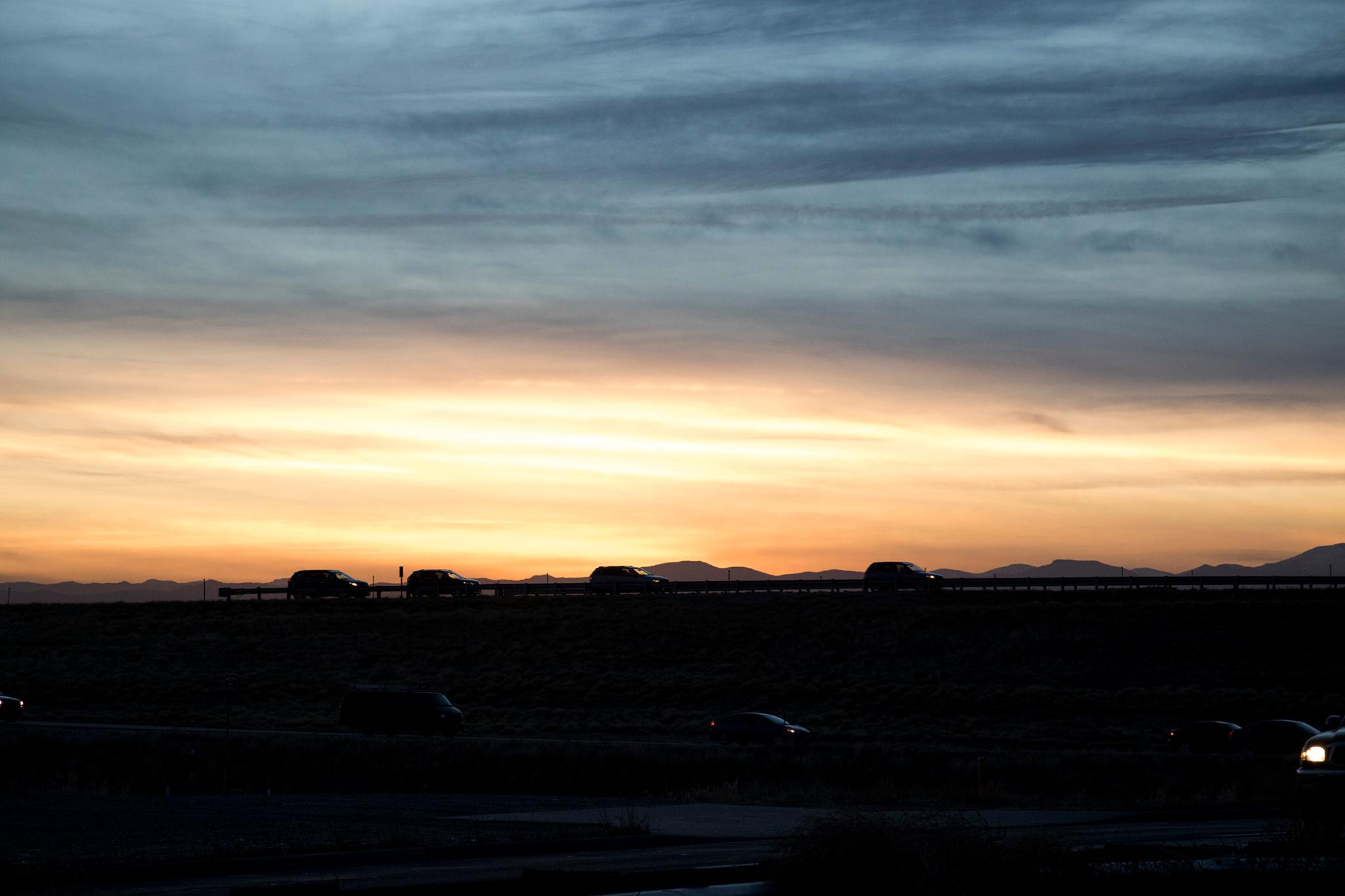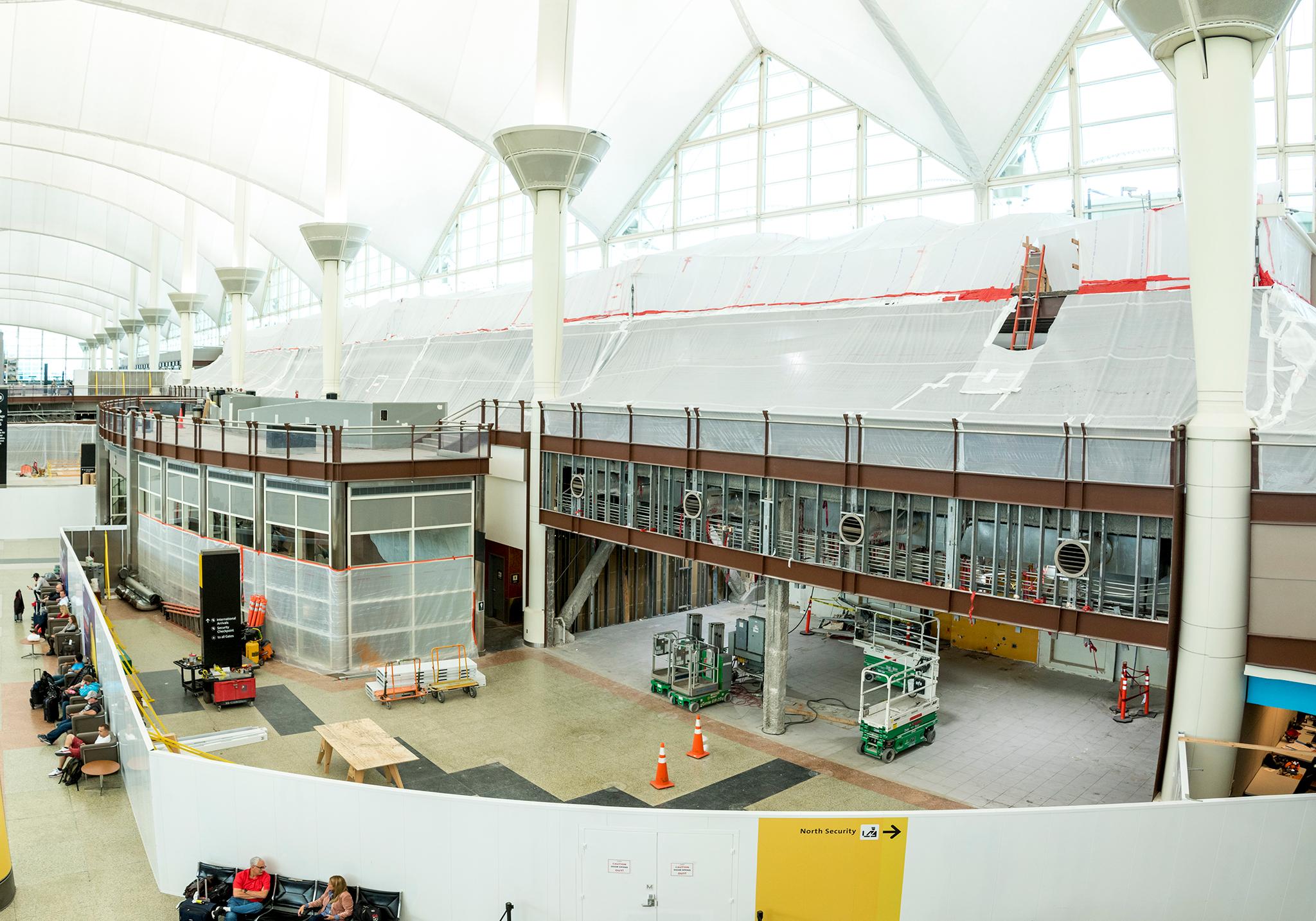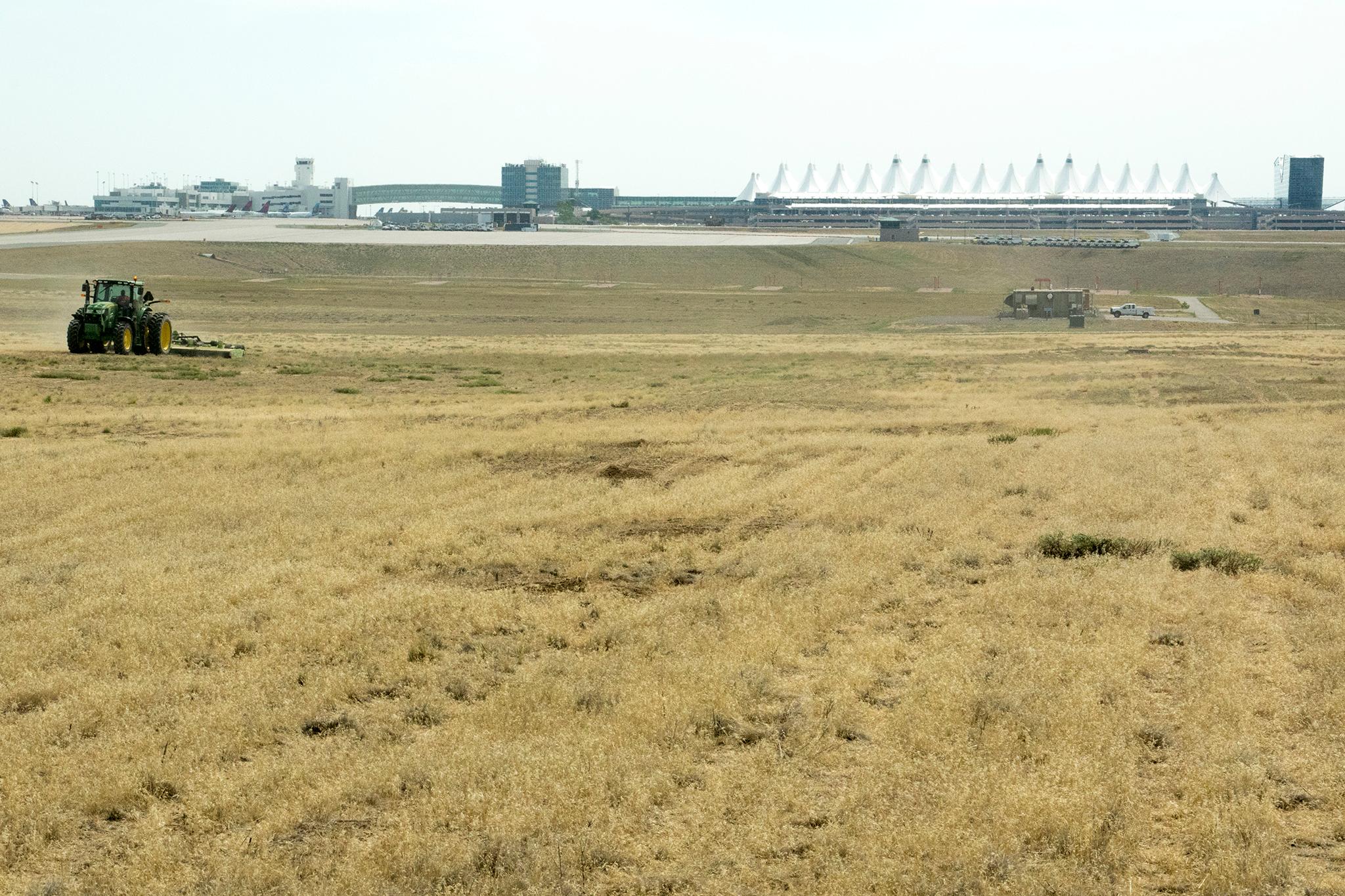You know how some cities have beautiful oceanfront ports that anchor boardwalk shopping, homes with a view and international commerce in the form of shipping containers?
Yeah, Colorado doesn't have that. But we do have Denver International Airport with 16,000 acres of grass around it to build stuff on. It's centrally located (if you zoom out on a map of America) and has a view of the Rockies. Plus Panda Express!
The Hancock administration and past mayors have angled to build a city within a city that revolves around DIA for years. John Kasarda, who literally wrote the book on the "aerotropolis" concept, told Denverite he discussed the plan with city leaders 15 years ago.
"We used to say it's really an airport island in a sea of farmland," Kasarda said.
The idea is to replace the empty plains with commercial hubs centralized at the airport for easy international access. Manufacturing centers, shipping warehouses and corporate offices would form a "global business district," the brochure states. Restaurants, shops and hotels would serve travelers and airport workers.
Homes -- which Denver needs more of, to say the least -- aren't part of the plan. They'll exist only on the outskirts, well outside the central district on airport land, around the 61st and Peña rail station, for example.
Maybe they should call the aerotropolis Denver's second mint, because the development model will print money. Supposedly.
The house that Blucifer built raked in more than $1 billion in 2017, according to the city budget, and generates $26 billion a year for Colorado's economy. The Denver City Council approved almost $43 million in airport contracts in October alone, city documents show. Local and state coffers benefit from tourism and taxes, which help fund public services.

Kasarda, a University of North Carolina professor, consults with airports and cities all over the world, spreading the aerotropolis gospel that his model creates at least as many jobs for local low-income residents as it does for the rich.
But there's a different, sobering take on airport cities pushed by University of Hong Kong professor Max Hirsh, who created the concept of "airport urbanism." It refines the aerotropolis idea to prioritize cities' goals and needs, not predetermined hopes and dreams.
Hirsh has visited 50 airports in his work as an academic and a consultant. Some did well. Others housed vacant office buildings and empty warehouses where airports had bet on building thriving global business hubs.
"A lot of them said that it was based on a lot of wishful thinking rather than solid market research," Hirsh said in an interview from Hong Kong. "For me, trying to understand why the aerotropolis doesn't work is what led to this new model that I'm advancing."
Hirsh is all for commerce centered around airports. But, for example, building offices at the airport makes the most sense in places where office space is in short supply. That's not a problem Denver has.
"When I talk to most multinational corporations, they want to be downtown," Hirsh said. "I think unless there's a very specific reason why your employees need to be at the airport every day, being near the airport alone is not a unique selling point."
There's no guarantee Denver's airport city will ever take off, but Hirsh said the city is well-positioned to make it work, as long as it uses "a really targeted strategy" when recruiting development.
The airport city has barely boarded any passengers.
Darryl Jones, chief real estate officer at DIA, says he has two main jobs: generate non-aviation revenue for the airport and enhance the passenger experience.

But aside from a gas station, some parking lots, and the Westin bowtie hotel attached to the main terminal, DIA doesn't have any new takers to build up the prairies.
That's no big deal, according to Jones, because the aerotropolis is on a 50-year timeline.
"We are pretty much like a startup real estate company at this point," he said.
DIA hired a brokerage firm about a year ago to find suitable developers. Jones said he expects shovels in the ground sometime in 2020.
Wait -- isn't building a neighborhood 25 miles from downtown the definition of sprawl?
Spreading development further and further apart means people have to travel longer distances. That type of land use is what creates car-dependent cities and the traffic that comes with them.
The airport, obviously, has RTD's A Line. That helps. The question is whether transit, walking and biking will be compelling options to travel to, from and around 16,000 acres of new development -- and whether policies encourage driving or discourage it.
For example, the Hancock administration markets the 61st and Peña RTD station as a futuristic, walkable neighborhood. But land use policies ensure car storage will be a major part of the area's future.
"Can we create an aerotropolis that is an economic development powerhouse that's also not more place-less, automobile-dependent sprawl?" said Ken Schroeppel, a professor at the University of Colorado's College of Architecture and Planning.

Schroeppel founded the websites DenverInfill and DenverUrbanism, which promote modern, compact development to reverse Denver's car-centric streets.
In an increasingly expensive city, today's Denverites won't see airport profits subsidize things like housing, transit, education or parks.
They can't -- DIA has to reinvest all of its revenue into the airport. It's a publicly owned business enterprise, just like our city golf courses.
The main point of generating revenue from things other than travel? Keeping the airport self-sustainable.
"The idea of this enterprise fund is the way to go," Kasarda said. "I support it 100 percent. An airport is not built to generate revenue for cities."
DIA's economic prowess should trickle down to residents, Kasarda argues.
"Commerce is the key point because without commerce you cannot have any quality of life," he said. Kasarda claims downtown Denver "would shrivel" without the airport.
Cyclical profits spent solely on expanding the airport and its new district is somewhat antithetical to Hirsh's idea of people-centric airport development that serves a societal need.
"I don't know to what extent this should be explored already, but as the airport starts to develop more non-aeronautical functions... some of those should be things that benefit the community, and I think that the enterprise should be used to support those things," Hirsh said.
If an airport city should cater to city needs, wouldn't housing be a top priority?
Maybe, if homes were allowed on DIA's land. But Jones said federal regulations prohibit them, and that pollution and noise make the area undesirable.
So what is in it for Denverites?
What the airport-anchored district will do, Hirsh said, is make living somewhat close to DIA feasible. Future residents would play, eat, shop and work in the district (airport workers and passengers would too).

In other words, the airport district supports future housing nearby.
Also: Denver's airport investments have resulted in more intercontinental flights.
And though residents don't always see it, city and state coffers benefit indirectly from the airport. It generates billions from tourism, property taxes, restaurant taxes and on down the line to fund public services. It's also helped drive the city's strong job market.
"One reason why the Denver business community has been able to grow and attract new business is because of the accessibility issue," Hirsh said. "And I think that you're seeing that now in how Denver is getting a lot more intercontinental destinations than it used to, and partly that has to do with the fact that the older airports in America are full."
By the way, the "aerotropolis" moniker has fallen out of fashion with Jones and his colleagues, as well as with Hirsh. It doesn't really convey what's actually happening there.
"Let's be honest, if you hear the word aerotropolis, is that necessarily a place that you want to live? No," said Hirsh. "So I think that the successful examples of airport urbanism or airport-led urban development, they're thinking about a name that encompasses how the local population can benefit."














